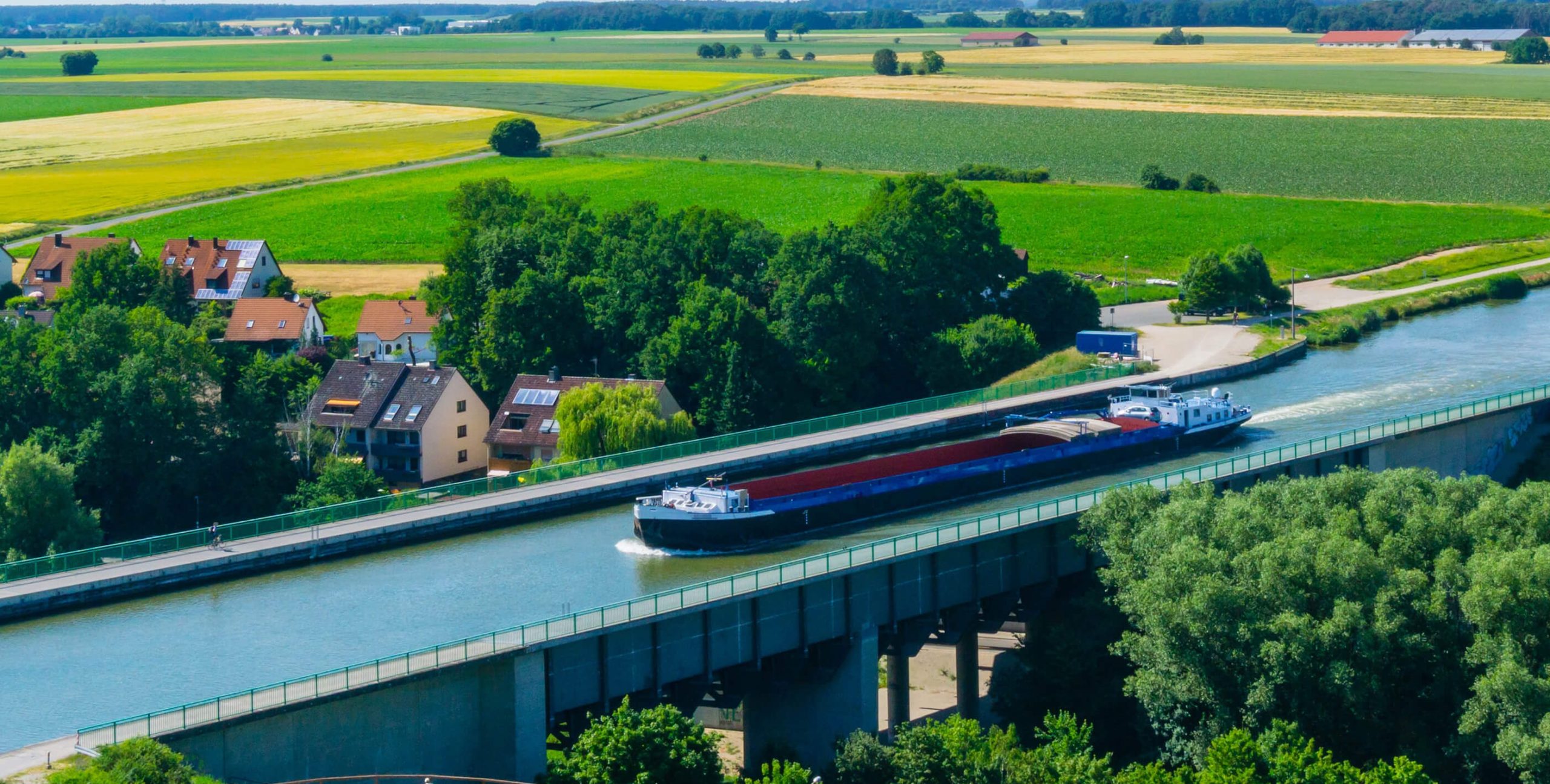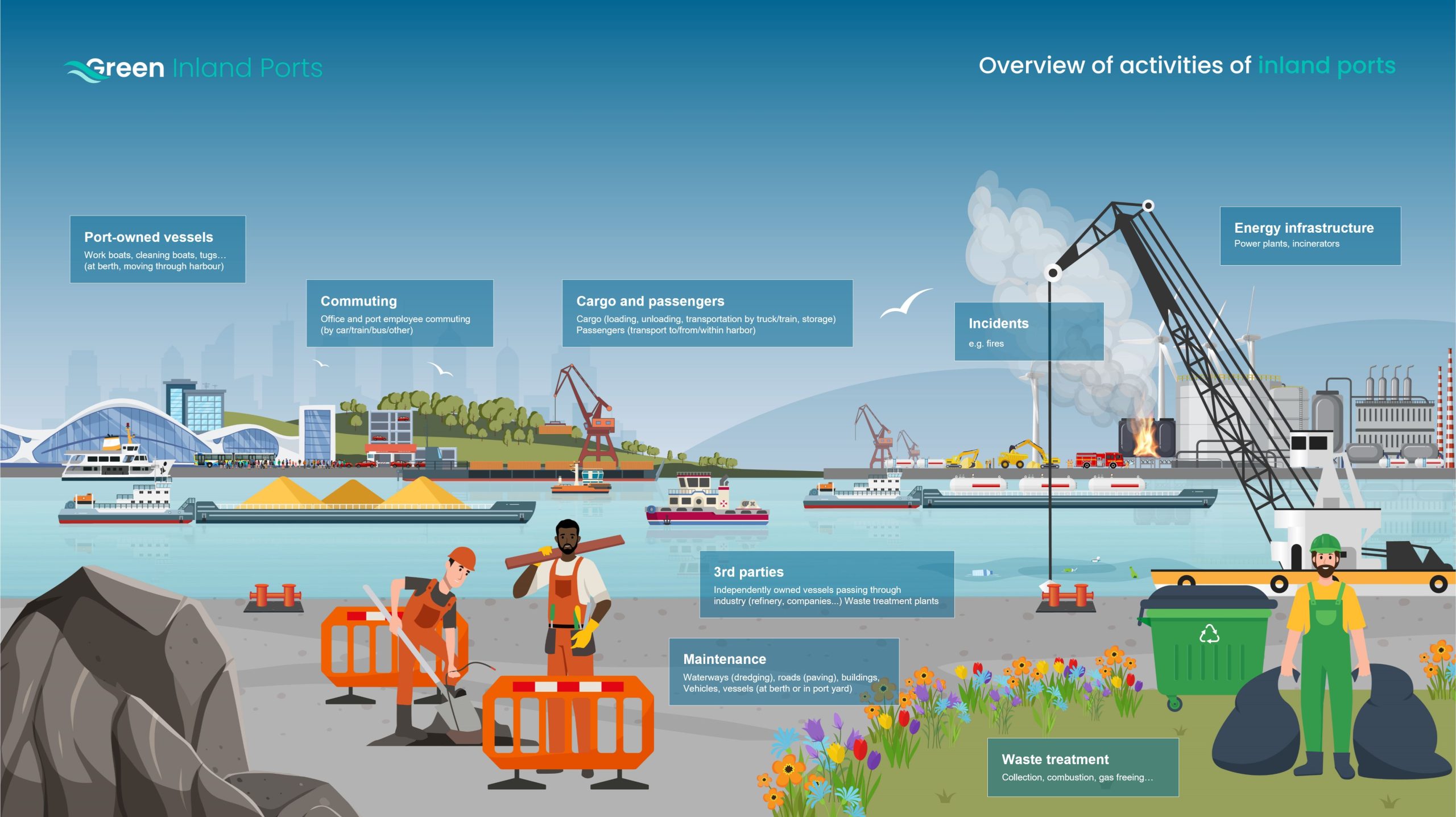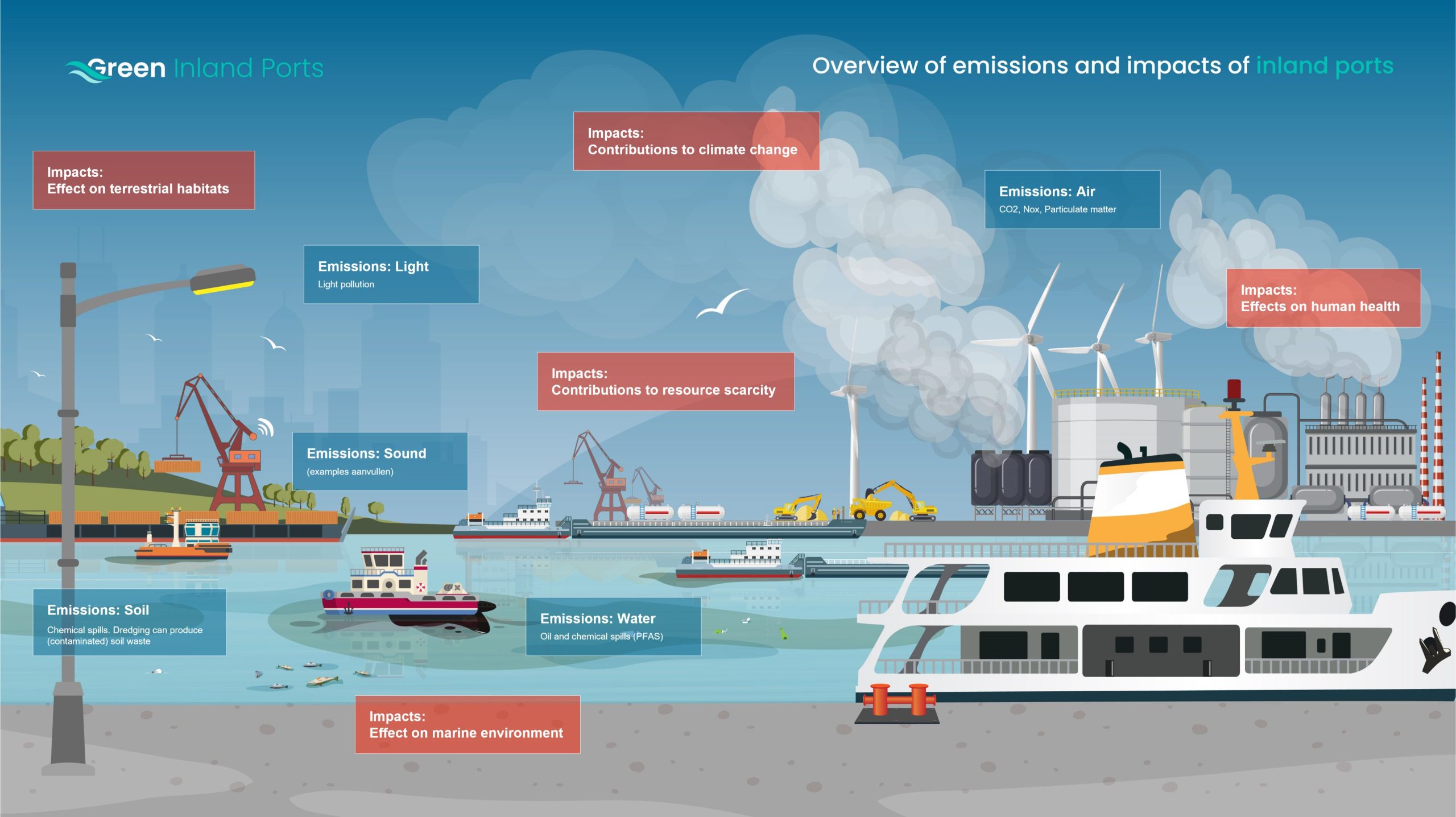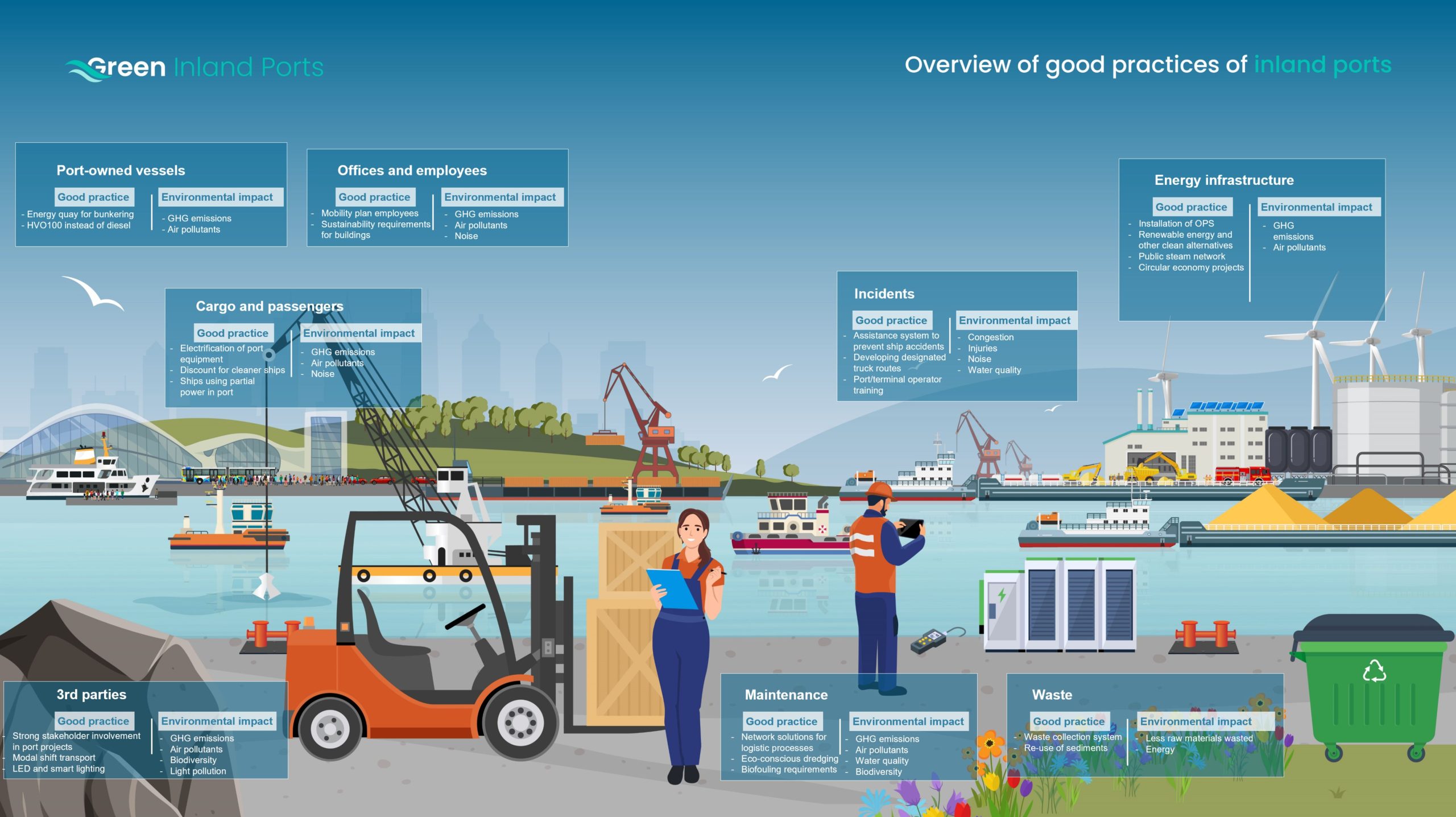Task 1
Environmental Impacts and Energy Efficiency and Transition
Inland Ports are essential to achieving the EU Green Deal and decarbonising our transport systems. Our research focuses on determining the environmental impacts of inland ports and pathways to become more sustainable.

Introduction
This task within the Green Inland Ports project focuses on the environmental impacts of port activities and related legislation. We identify gaps in the legislation and key challenges ports face when adopting environmental legislation.
We have described good practices (showcased in the third tab below) of ports to reduce their environmental impact. In addition, we have developed a tool with which every inland port can calculate their environmental impact.
Port Activities
The first step in determining the environmental impact of inland ports is taking stock of the activities taking place in inland ports.
Activities have environmental impacts as they use resources and/or emit substances to the environment. A spectrum of activities take place in inland ports (Tab 1, Figure 1). For example, an activity in the port could be the movement of vessels, which use fuels and emit greenhouse gases. All the activities can be clustered into eight categories, such as commuting of employees, energy infrastructure, and movements of vessels.
Generally, ports host or facilitate operating companies, like:
- A dry bulk terminal
- A liquid bulk terminal
- A container terminal
- A passenger terminal
- A shipyard
- Barge operators
- Logistic service providers, including warehouses
- Power plants, incinerators, and wastewater treatment
- Offices
The operations of the companies result in activities from several or all categories as depicted in Figure 1. We are currently building a model to determine the environmental impact of each operation. The goal is that eventually ports or terminals will be able to determine their environmental impact per type of operation.

Environmental impact
The environmental impact of an activity is determined based on all the emissions caused by that activity. Tab 2, Figure 2 shows the type of emissions we investigate in blue boxes, such as:
- Emissions to air: these include greenhouse gas emissions and particulate matter emissions
- Emissions to water: these include all emissions that end up in water, such as oil and chemical spills
- Emissions to soil: these include all emission that end up in the soil, such as chemical spills
- Light emissions: depending on the local environment, light can be polluting and harmful for the environment
- Sound and vibration emissions: these can also affect the local environment.
To model the emissions of an activity, we use literature information and interviews with activity experts. When limited data is available concerning a particular emission, we build models using environmental databases to approximate the emissions of an activity.
All the emissions have effects on the local and global environment. These effects take various forms. For example, the effects on global warming through greenhouse gas emissions, algae blooming through nitrogen and phosphate emissions, and toxic substances that affect marine or terrestrial ecotoxicity. Some of these impact categories are shown in the red boxes in Figure 2. ReCiPe developed an international and well-known method to determine how a list of emissions causes environmental effects. Read the impact assessment. We use this method to determine the environmental impact of activities or port modules.
Insight into the environmental impact for activities and port operations, allows ports to tackle these impacts.

Good practices
Many ports have already implemented measures to reduce their environmental impact. Through interviews with ports and other relevant parties all over the world, a list of good practices regarding greening efforts for inland ports is being built.
This list serves the goal of sharing knowledge and offering inland ports an overview to aid them in reducing the environmental impact. The good practices can be implemented on a range of different activities in ports, such as cargo handling, soil quality, energy generation and waste. It can tackle one or several types of emissions, such as greenhouse gases, noise and water pollution.
For example, electrification of cargo handling equipment both reduces greenhouse gas emissions, but also prevents noise generated from engine activity. Figure 3 provides an overview of categorisation and examples of good practices in inland ports.
